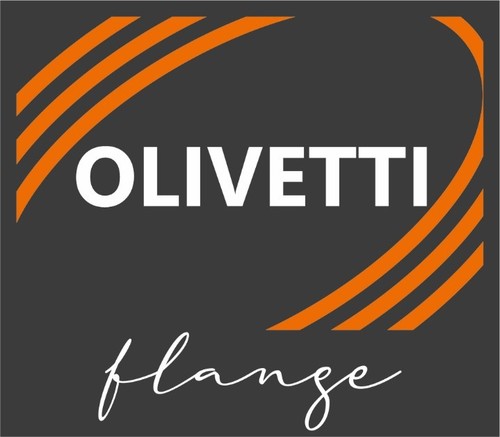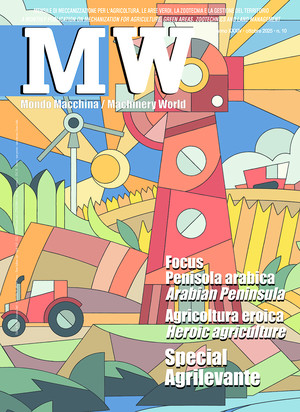
EIMA 1969: a trade fair debut
This year EIMA International reaches its 41st edition, which will take place on the same dates of the first 1969 edition: 12-16 November. Machinery World traces the most important stages of the 40th anniversary of the event, through a series of articles illustrating the history of EIMA from the beginning to the present day
On November the 12th 1969 at 9 am, the then Minister of Industry Domenico Magri, inaugurated in Bologna the first edition of EIMA, the International Exhibition of Agricultural Machinery Industries, which hosted 224 companies, of which 24 were foreign and was visited by more than 11,000 businesses, of which 300 came from abroad.
Eima was born in a period that recorded the growth of agricultural mechanization in almost all industrialized countries with advanced agriculture, according to the tendency to increase linearly agricultural production, particularly in Italy, where between the 60s and 70s the sector was able to support the great transformation underway in the countryside that saw a massive expulsion of workforce and the introduction of new technologies.
The exposition came to life from a happy intuition of the National Union of Agricultural Machinery Manufacturers – born in 1945 in order to study and promote economic, technical and scientific initiatives in the interest of agricultural machinery industry – that wanted to give a concrete response to the demand expressed by the sector's companies to have a dedicated exposition for the specialized compartment, where the trading perspective could be joined by the comparison and the exchange between operators in the industry of mechanical farming. Due to the stop of some cultivation jobs, the best period to hold the event was found in November, appropriate to the planning of purchases by dealers and users and consequently to the production planning in industry.
The choice of the most appropriate site to host the exhibition fell on Bologna, because of the modernity of its exhibition centre, built just a few years earlier in 1965. As we can read in brochures and catalogues prepared for the first edition of the event, “Bologna exhibition centre allows you to expose in the autumn in modern and heated halls, with the completion of adequate and rational services”. The centre is also strategic by virtue of its location and network infrastructures – such as railways, highways (Autostrada del Sole) and the airport. All these infrastructures connect it to the rest of Italy and the world, and make it attractive because of the “traditional hospitality of its citizens”.
The duration of the event was fixed in five days, due to “economic criteria which must be inspired by a really specialized exhibition”. The expositive logistics provide the partition of the various means in seven sectors, “according to the function of the machines”, in order to allow visitors, even through a quick visit, to see everything and compare the various proposals according to their own needs.
The 1969 EIMA conference sector – which hosted a total of twelve meetings – opened with the formula of a modern round table on “Professional training and research topics for the construction and use of agricultural machinery”, with the participation of academics such as Enzo Manfredi and Giuseppe Pellizzi, respectively from the Universities of Bologna and Milan. Another detail on the “first EIMA” was the presence of official foreign delegations from Bulgaria, Czechoslovakia, Congo, South Corea, the Philippines, Taiwan, Iran, Malaysia, Poland, Romania, South Africa, Thailand and Hungary. The CNR (National Research Coucil) attended a series of meetings dedicated to the Research Programme for Integrated Farm Mechanization.
Since its first edition, the exhibition included an official catalogue in four languages (French, English, Spanish and German), containing logistical information and listing all the exhibitors with clients database and commodity production, displaying in 1969 a total of 97 different items.
By the second edition, held from 11 to 15 November 1970, the market sectors passed from seven to thirteen and defined the layout of the exhibition that remained essentially unchanged until the most recent years: 1) motors, 2) remediation equipment, 3) tractors, cultivators and harrows, 4) machinery for tillage, seeding and fertilizing, 5) machinery for the protection of plants and crops, 6) machines for irrigation and sprinkling, 7) harvesters, 8) machines for primary processing and preservation of products, 9) machines for farms, 10) machinery for agriculture, 11) machinery for the moving and transport of products, 12) single parts, accessories and spare parts, 13) small motorized tools and hand tools.
During the 1970 edition's presentation, the Secretary General of Unacoma Aldo Ambrogi – the true “founding father” of the event – while confirming the access formula to the exhibition, that still remains today – the first two days are invitational and the others open to the public – thanked for their “act of faith” the Italian manufacturers, who had increased their precence by 60% over the previous year, thus providing both a wish and an encouragement for “a new revival of the industrial and commercial sectors”. In 1970 the in-depth meetings were over 20 and ranged from “the agronomic importance of the agricultural operations of soil such as tillage” to “agricultural mechanization: a point of convergence between industry and agriculture”.
The introduction to the catalogue of the 1971 EIMA edition (held from 10 to 14 November), highlighted some aspects of the exhibition's regulations aimed at professional rigour for an authentic specialized trade fair appropriate to the times (no advertising in the pavillions, standardized stands, exposition of a single copy for each product of the exhibiting companies). The first three years saw an increase in the exhibition area (from 14,700 to 26,000 sq m) and doubled the exhibitors (increased from 224 to 498). The Corriere della Sera, on November 11 that year presented EIMA as “the living room of the agrcultural machines, the living catalogue of all technological tools”.
After one year break in 1972, EIMA returned in 1973 (from 14 to 18 November), with unchanged features and with the hypothesis in a first stage planning – evidenced by a brochure of that time – of a possible biannual edition by virtue of the positive numbers of that edition (which recorded the presence of 535 exhibitors and 24,000 visitors). This hypothesis will never be really confirmed and the event took place yearly.
The introduction of the Visitor's Guide at 1975 EIMA edition, talking about an increase in the number of exhibitors by 10% compared to the previous edition, emphasized “the sense of responsibility and cooperation of all the exhibitors that contained as much as possible the demand for exhibition space”, thus allowing more companies to participate.
In 1977 (from 9 to 13 November), EIMA also became the exhibition of machinery and tools for gardening which included the introduction in the 13th sector of mechanical equipment especially intended to gardening (with 125 companies of the gardening sector), as an evidence of “the increasingly economic importance of that kind of mechanization”.
From 1976 to 1979 the hosted companies increased from 795 in 1053 (of which 220 were foreign companies), and the visitors from 47,475 to 74,500 (with 4,116 foreigners). The exposed products increased from 157 in 423, thereby demonstrating the success of a rigorous and professional exhibition's formula, always responding to the real demands of exhibitors and visitors.








